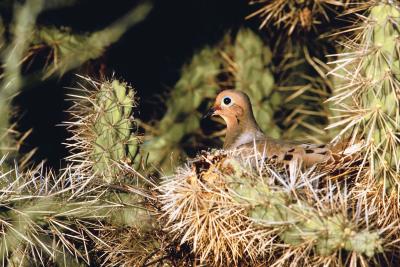
 Credit: Anrod52 Photos
Credit: Anrod52 Photos
A Great Blue Heron is a treat for sore eyes that have just finished staring at a computer screen. I met this particular heron on two separate occasions in successive days while participating in a company sponsored morning health walk. On both days the heron perched on a dead branch of an old and twisted ficus tree that grows on the edge of the canal.
The first day the bird on the branch looked away from land and into the canal waters. The second day the heron looked out over the land side directly at the path we used for our morning walk. The heron stood on this branch, which incidentally hangs over the edge of the canal, motionless until I approached. On both days once he became aware of my interest, and my camera, he posed briefly and allowed me to take a few photos before launching into the air, spreading his wings and flying away.
Great Blue Herons live across North America, Mexico, Central America, the Caribbean and South America. They live in both salt water and fresh water habitats. Most times you’ll see them slowly walking along the edge of marshes, lakes, ponds, beaches and, in this case, a Florida canal. Anywhere that shallow water with critters in it is accessible is good hunting grounds for the Blue Heron. They can also be seen at times walking across fields hunting for small mammals, snakes, toads, and larger insects.
The unlucky, the sick, the slow are all meals for the Great Heron. They can stand still, so motionless that they look like statues instead of live birds. When something approaches and comes within striking range, the heron will uncoil his S-shaped neck in a quick strike. The prey will either be grabbed up, or if large enough, it could be stabbed by the sharp beak. Once subdued the stunned animal is positioned by the heron so it will slide head first down the throat.
Great Herons in the blue-gray coloration are the most common of these birds seen around the land. They do, however, have some variants. One variant is an all-white Great Heron. The Great White Heron is mostly seen in the far south of Florida, the Yucatán and the Caribbean. The white heron seems to be particular to marine habitats and can be found stalking along beaches, shallow bays, and saltwater marshes.
Another variation is called the Wurdemann’s heron. These herons have necks and heads in white but their bodies are in the blue-gray colors of the blue heron. These herons are seen mostly in Florida where there is an overlap of the white heron and blue heron territories. I have never seen one of these mixed up herons although I have seen a white heron stalking the edge of a golf course pond near the east coast of Florida.
Most of the time these herons will be live their lives individually. They remain in their solitary lifestyles until it is time to breed when they will usually form colonies. Their preference for nesting is a group of tall trees in the middle of a marsh, pond or lake. They will nest in other areas, sometimes even in bushes, as long as a good food supply is within 4 miles.
The National Geographic and All About Birds have more information on the Great Blue Heron.
 Credit: Anrod52 Photos
Credit: Anrod52 Photos
These Great Blue Heron Haikus were inspired by the photo and information presented above. I wrote both of them and hope you enjoy them.
Dark iris yellow eyes
See into shore side waters
Guide beak to small prey
Fish, frogs, crustaceans
Mice, ducklings, snakes, lizards, bugs
Tasty heron meals

 The Hamburg Chicken
Poultry BreedsThe Hamburg Ch
The Hamburg Chicken
Poultry BreedsThe Hamburg Ch
 Bird Watching: Beautiful Birds Seen in Western Australia
Collection of Beautiful Bird
Bird Watching: Beautiful Birds Seen in Western Australia
Collection of Beautiful Bird
 Bird on a Branch: The Great Blue Heron
Credit: Anrod52 Photos
A Great Blue Heron is a
Bird on a Branch: The Great Blue Heron
Credit: Anrod52 Photos
A Great Blue Heron is a
 How to Make a Bird House for Doves
How to Make a Bird House for Doves
How
How to Make a Bird House for Doves
How to Make a Bird House for Doves
How
 Great Birds of Prey in Australia
The best thing I have ever d
Great Birds of Prey in Australia
The best thing I have ever d
Copyright © 2005-2016 Pet Information All Rights Reserved
Contact us: www162date@outlook.com